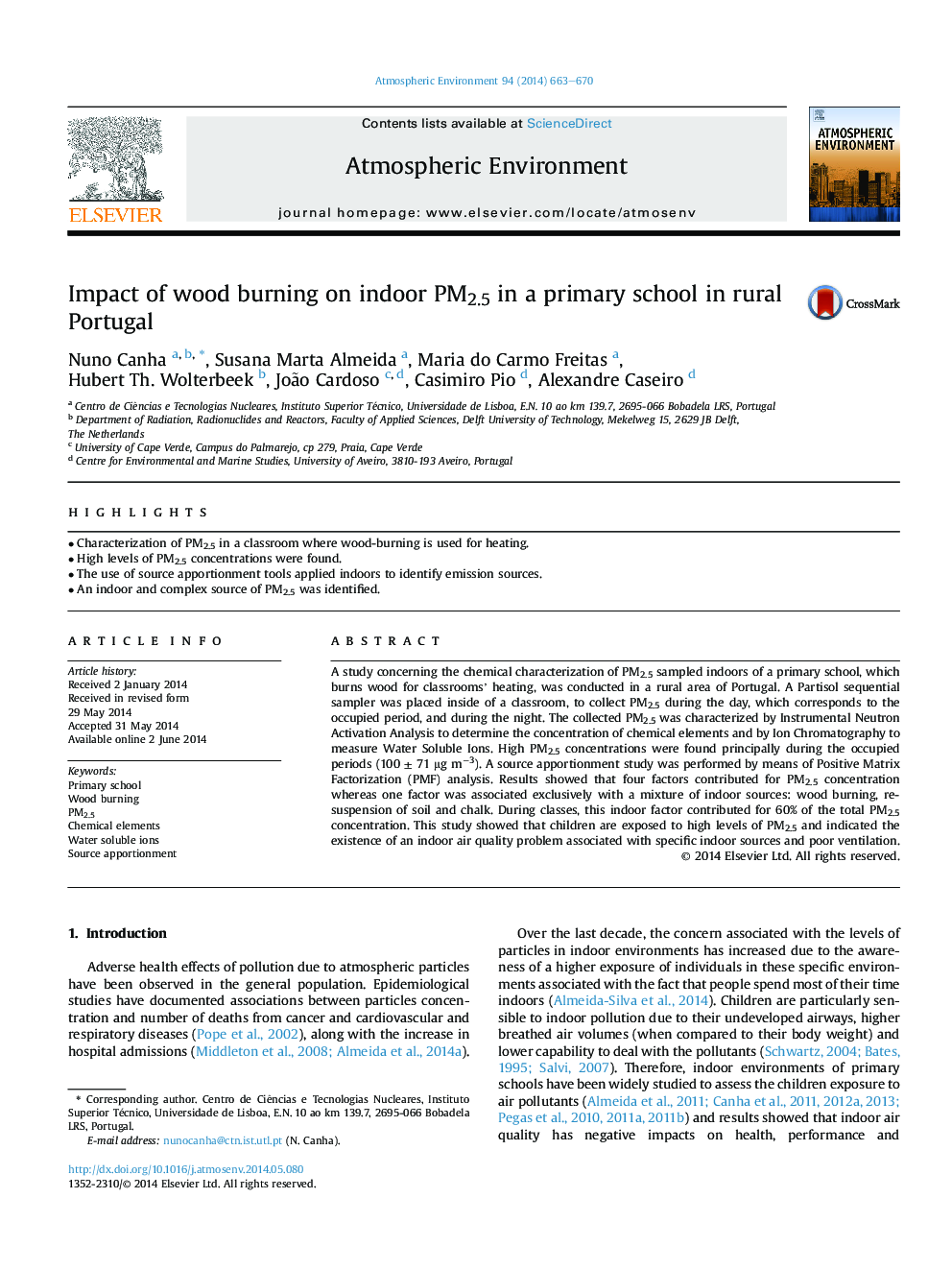| Article ID | Journal | Published Year | Pages | File Type |
|---|---|---|---|---|
| 6339682 | Atmospheric Environment | 2014 | 8 Pages |
â¢Characterization of PM2.5 in a classroom where wood-burning is used for heating.â¢High levels of PM2.5 concentrations were found.â¢The use of source apportionment tools applied indoors to identify emission sources.â¢An indoor and complex source of PM2.5 was identified.
A study concerning the chemical characterization of PM2.5 sampled indoors of a primary school, which burns wood for classrooms' heating, was conducted in a rural area of Portugal. A Partisol sequential sampler was placed inside of a classroom, to collect PM2.5 during the day, which corresponds to the occupied period, and during the night. The collected PM2.5 was characterized by Instrumental Neutron Activation Analysis to determine the concentration of chemical elements and by Ion Chromatography to measure Water Soluble Ions. High PM2.5 concentrations were found principally during the occupied periods (100 ± 71 μg mâ3). A source apportionment study was performed by means of Positive Matrix Factorization (PMF) analysis. Results showed that four factors contributed for PM2.5 concentration whereas one factor was associated exclusively with a mixture of indoor sources: wood burning, re-suspension of soil and chalk. During classes, this indoor factor contributed for 60% of the total PM2.5 concentration. This study showed that children are exposed to high levels of PM2.5 and indicated the existence of an indoor air quality problem associated with specific indoor sources and poor ventilation.
